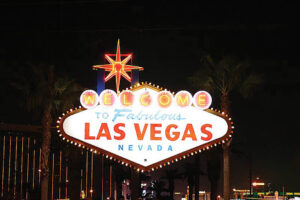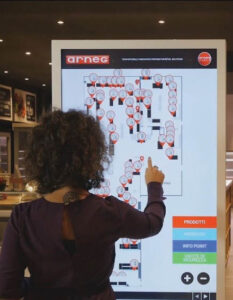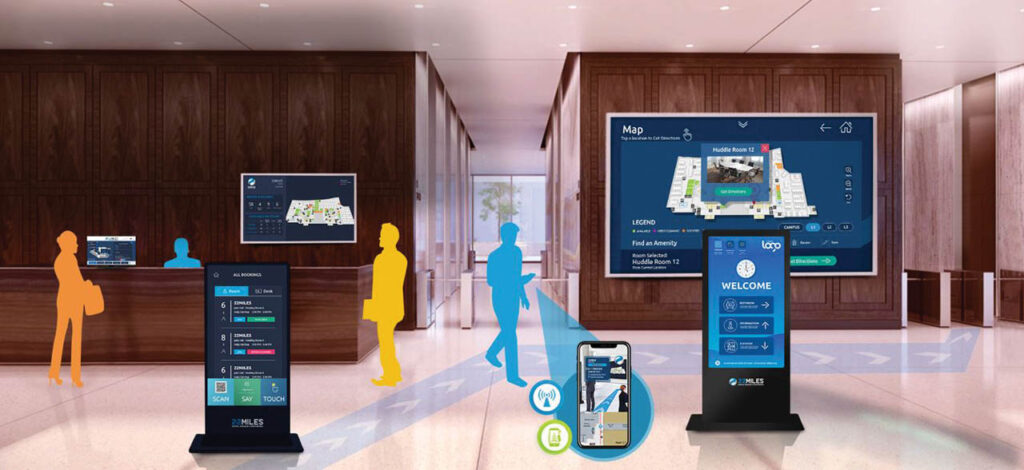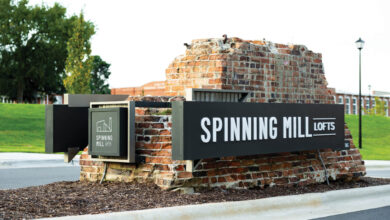Future technologies are always a focus in the signage industry. But, have you ever wondered what the first illuminated sign looked like? How and when electrical signage got its rocky start? Or who we should thank that we can spot a convenience store brand on the dark interstate at 1:30 a.m. to get fuel, stale Twinkies, or an energy drink plus a clean restroom?
While illuminated glass tubes were used in the mid-19th century, some crafty entrepreneurs began using oil lanterns to light the surface of signs outside their establishments during this period. They burned whale oil, kerosene, camphene, and a mixture of turpentine and alcohol called “burning fluid” until gas, and finally electric lighting, replaced them.
It is believed that the first lighted sign was fabricated in London in 1881. Reading “EDISON” in large block letters, this marvel was introduced at the International Electrical Exposition in January of 1882. Predating the first modern automobile by three years, this sign gained notoriety around the world, though slowly, but it ushered in other creative inventions that would forever alter our industry.
French chemist Georges Claude followed up with the first neon light in 1902. He showed it to the public for the first time at the Paris Motor Show in 1910 and acquired a U.S. patent five years later. A forward-thinking Parisian hairdresser is credited with the first use of a neon sign in 1912. The words “Palais Coiffeur” became a prominent feature above the storefront and soon business owners across Paris ordered their own neon signs.
Earle C. Anthony, the owner of Packard car dealerships in California, purchased two neon “Packard” signs in 1923. In 1924, a neon sign was installed in New York’s Times Square advertising automaker Willys-Overland. The race was on.

Chicago saw the first neon sign at a Chinese restaurant called Orange Garden in 1926. Las Vegas, which later would become the benchmark of all things neon, saw its first signs between 1928 and 1930. And by the mid-1930s, neon signs could be found in every major city in the world and was the most popular form of advertising. This boom would continue into the 1950s.
Technological innovations in neon lighting during this time saw improvements that continued to propel its popularity. The use of argon instead of neon and new fluorescent tube coatings (and later leaded glass) helped to generate a wide range of neon sign color options. Iconic neon signs, like the Flamingo hotel sign in 1953 and the “Welcome to Fabulous Las Vegas” sign in 1959, enhanced the character and popularity of Las Vegas. Las Vegas has been a haven for thousands of illuminated signs, and some neon pylon signs were so large, they had neon equipment for glass blowers to fabricate repairs and replacements inside them!

In the 1960s, neon started to decline, partly because they were no longer a novelty, and less expensive illuminated signs became more widely used. The transition from neon to LED lighting not only revolutionized commercial lighting but it also created a pathway to environmentally sustainable and cost-effective illuminated signage.
During the 1980s, neon found a revival with television series like “Miami Vice” promoting nightclubs, hotels, bars, and a luxurious lifestyle. But like all things with a shelf life, neon fell out of favor in the 1990s, until recent years in special applications. Some specialty brands still insist their signs are neon. However, improvements in LED tubing and light output have created a faux-neon transition that simulates traditional neon and argon signs. The low voltage aspects of LED and its power supplies have become safer and more energy efficient than the higher voltage transformers that powered neon.
The light emitting diode, or LED, had a later start, but many people think it is a 21st century invention. In 1961, Robert Biard and Gary Pittman at Texas Instruments patented the first infrared LED. But a Russian inventor, Oleg Lesev, created the first LED in 1927. The first green LED was born in 1958, but not until 1962 did a red LED see light.

IBM implemented LEDs for the first time on a circuit board in an early computer in 1964. Hewlett Packard incorporated them into its calculators in 1968. A blue LED was created by Edward Miller and Jacques Pankove in 1971, and the following year the first yellow LED was invented. 1986 is a ground-breaking year for LED with two scientists creating a working blue LED that set all future standards.
White LEDs became commercially available in 2002 with widespread use in schools, offices, and hospitals by 2008. By 2019, LED lights were the predominant source of lighting as halogen and fluorescent bulbs were phased out.
 Compared to neon, LED offers superior energy efficiency, longer lifespan, lower maintenance costs, and the ability to create dynamic displays with changing colors, animations, and other advertising flexibility. LEDs have transformed the signage marketplace, whether storefront signs, billboards, digital message boards, and artistic or architectural installations.
Compared to neon, LED offers superior energy efficiency, longer lifespan, lower maintenance costs, and the ability to create dynamic displays with changing colors, animations, and other advertising flexibility. LEDs have transformed the signage marketplace, whether storefront signs, billboards, digital message boards, and artistic or architectural installations.
What is the next evolution of illuminated signs? With further advancements in LED research, expect higher resolution visuals, integration with smart technology, and organic light emitting diode, or OLED. These panels will be slimmer, flexible, and even more energy efficient with extreme customization capabilities.
These changes will allow signs that can change based on environmental conditions, user interaction, real-time data, touch screens, and/or motion sensors. LED panels will have improved pixel density for sharper visuals and complex animations and streaming that will approach movie theater quality. Tailored messaging based on individual demographics or preferences will be enhanced by smart technology integration. Think “Blade Runner” on steroids.

The ability to have 3D visual effects and other advanced lighting and color transitions or patterns are possible. Flexible LED strips or panels or sheets will create curved or nontraditional shapes. Connecting signs to the internet for remote monitoring, content updates, data analysis, and viewer integration will become common. Remember the Super Bowl XVIII television commercial introduction of the Apple MacIntosh personal computer in 1984? Big Brother indeed.
Advertising is all about evolution. Electric signs allow you to customize your sign to fit the look and feel of any business. If visibility is important and you want to grab attention, a lighted sign is a great option. Whether front-lit, backlit, halo-lit, neon, or LED, you still have only one chance for a great first impression. Make it count!






